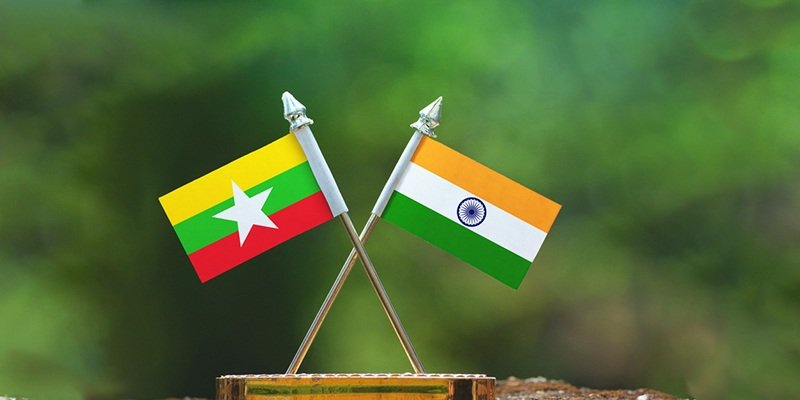Defence Cooperation between India and Myanmar: Analysing the Recent Trajectory

Introduction
In the last week of August, the Indian Army handed over 10 military-spec Tata Safari Storme SUVs to the Myanmar Army. Though only a limited number of print and digital media covered this news in detail, from the perspective of bilateral defence cooperation between neighbours this can trigger a discussion on the growth of the defence partnership between New Delhi and Nay Pyi Taw. According to a report by Stockholm International Peace Research Institute (SIPRI, 2017), India is one of the top five arms exporters to Myanmar along with China, Russia, Israel, and Ukraine.

The defence cooperation between India and Myanmar has recently seen a notable improvement as both the countries signed a Memorandum of Understanding (MoU) in the last week of July 2019 to strengthen military-to-military ties in training, joint surveillance, maritime security, medical cooperation, infrastructure and environmental factors such as pollution. After the signing ceremony of the mentioned MoU, the Defence Ministry of India issued a statement mentioning Myanmar as “…a key pillar of India’s Act East Policy towards prioritizing relations with its East Asian neighbors”.
The statement emphasised that the defence cooperation between India and Myanmar has seen steady improvements in recent years. As The Commander-in-Chief of Myanmar Defence Service Senior General Min Aung Hlaing came to India to sign the MoU, he met the Chiefs of the Indian Armed Forces including the Chief of Air Staff Air Chief Marshal BS Dhanoa, Chief of Army Staff General Bipin Rawat, and Chief of Naval Staff Admiral Karambir Singh. The recent developments in the India-Myanmar bilateral defence cooperation also included a $37.9 million contract for the supply of indigenously built torpedoes which India already delivered to the Myanmar Navy and another contract for transferring a Russian-made Kilo-class diesel-electric Submarine to enhance the capability of the Myanmar Navy. This will be Myanmar Navy’s first Submarine. INS Sindhuvir is currently undergoing modernisation in the port of Vishakhapatnam and is expected to be transferred to Myanmar shortly.
That, Myanmar was seeking to acquire a submarine, in an order to be in sync with its neighbours in Southeast Asia, was pointed out by the country’s Deputy Defence Minister Major General Myint Nwe in May 2017. According to some reports and a survey conducted by the Singaporean Defence Ministry, many Southeast Asian countries have seen an upsurge in acquiring submarines in recent years. The survey mentioned an increase in the number of submarines in the region from 200 to 250 by 2025, with Vietnam having the largest number of Kilo-class submarines. Other countries having submarines in their possessions include Singapore, Malaysia, and Indonesia. Having said that, Myanmar, along with some other Southeast Asian countries, has the potential to attract Indian defence suppliers as the country is trying to mark a presence as a prominent defence supplier in the region and the world at large.
The question is, why Nay Pyi Taw?
And, the answer lies in several facts. First, geographically Myanmar is located between India and China, and, it is in India’s interest to appease the government of Myanmar if it wants to mark its footprints in Myanmar, a country which has always experienced Chinese influence- on its military, politics, economics, and infrastructure. Second, in recent years, India has started branding itself as an Indo-Pacific power and in this direction, New Delhi has enhanced its bilateral and multilateral relationships with almost every country in the region including Southeast Asian countries that geographically sit at the centre of the Indo-Pacific.
From this perspective, upgraded bilateral defence cooperation with Nay Pyi Taw seems to be a part of the rational foreign policy aimed at augmenting India’s status as an important Indo-Pacific stakeholder. This also goes well with India’s desire to look beyond South Asia. Third, from security and economic perspectives, a good neighbourly relationship with Myanmar is a necessity for new Delhi. Myanmar is Northeast India’s gateway to Southeast Asia and East Asia as well. India’s cross-country infrastructure and connectivity projects like the India-Myanmar-Thailand Trilateral Highway, Kaladan Multimodal Transit and Transport Project, etc., and the internal security of Northeast India could face more trouble if India and Myanmar had not taken forward-looking steps to augment their defence and security ties. These factors explain the initiation of the Joint Consultative Commission in July 2018 by former Indian External Affairs Minister Sushma Swaraj and her counterpart from Myanmar, U Wunna Maung Lwin in New Delhi.
In this meeting, India spoke about assisting Myanmar in upgrading and modernising its defence forces. The visible outcomes of such realisation can be seen as New Delhi and Nay Pyi Taw have started a number of new bilateral defence exercises in recent times. In November 2017, the first-ever India-Myanmar Bilateral Army Exercise (IMBAX) took place and, in March 2018 the first India-Myanmar Naval Exercise (IMNEX) was conducted in the Bay of Bengal.
Why New Delhi?
From Myanmar’s perspective too, both countries need to continue their relationships for multiple reasons. First, Myanmar and its leaders are continuously facing international criticisms over its targeted violence against the Rohingya community. In this context, closer friendship with India can give the leaders in Myanmar a sense of relief. One needs to remember, to give Myanmar a comforting zone, New Delhi chose not to condemn the atrocities done by the Myanmar military on the Rohingyas and has never criticised its de facto leader, Daw Aung San Suu Kyi for her support to the Tatmadaw in this case. One can see a similarity in Beijing and New Delhi’s approaches towards the Rohingya refugee crisis in Rakhine state, though both the capitals have different reasons behind that, something which is beyond the scope of this commentary. Second, despite maintaining a close neighbourly relationship with China, Nay Pyi Taw is well aware of the fact that China plays a double game in Myanmar.
On the one hand, it reassures Nay Pyi Taw about its intent of cooperating with Myanmar in curbing cross-border insurgency and on the other hand, it secretly helps various insurgent groups like the Kokang Army, the Wa State Army, and the Kachin Independence Army along the borders of China and Myanmar. This, being the situation at the ground, Myanmar tries to maintain a balance in its external relations with its neighbours in an order to avoid over-dependence on Beijing. India epitomizes a practical option for Nay Pyi Taw in this case. Third, linked to the second point, it is again rational for Nay Pyi Taw to keep its door open for all of its existing and future sources of foreign investment and development partners including India, Japan, Singapore, Australia and others in the region for its own benefits.
Conclusion

India’s enhanced bilateral relationship with Myanmar is a reflection of today’s realities which are different from the late 1980s when New Delhi decided to support the pro-democratic movements in Burma/Myanmar. New Delhi soon realised the importance of Myanmar’s geostrategic position and slowly started making a shift in its approach towards Myanmar.
The enhanced defence cooperation between Nay Pyi Taw and Delhi is a necessity as well as an outcome of the changing geopolitics in the Indo-Pacific which serves India’s domestic interests as well as regional aspirations. At the same time, this partnership is expected to benefit Myanmar as well, as stated above. Hence, one may conclude that the future of India-Myanmar defence partnership is bright and worth to watch while the undercurrents of the national interests of both countries are sustained well.
Original Source: An edited version of this article was published by Visvaneeti, Rethinking India’s Foreign Policy, an SRCC Economic Society Initiative, October 2019. An online version of the article is available at http://twenexindia.com/india-myanmar-defence-cooperation.aspx.


















